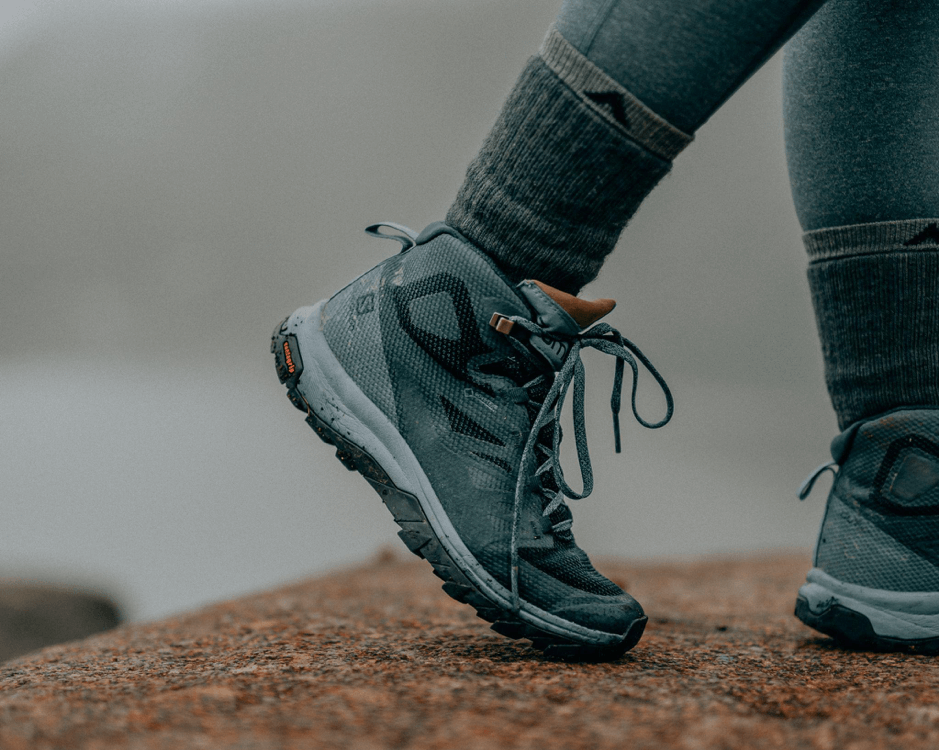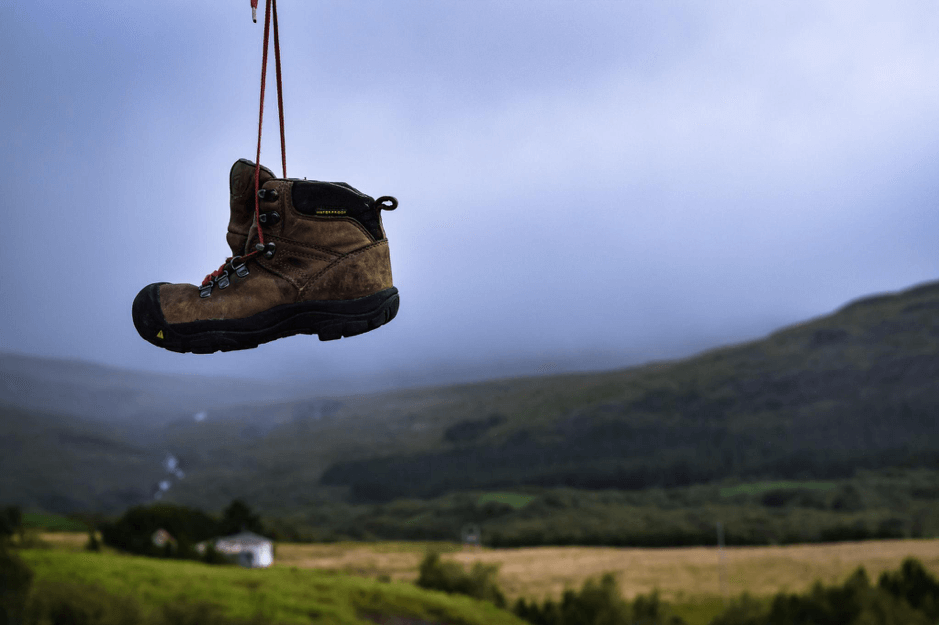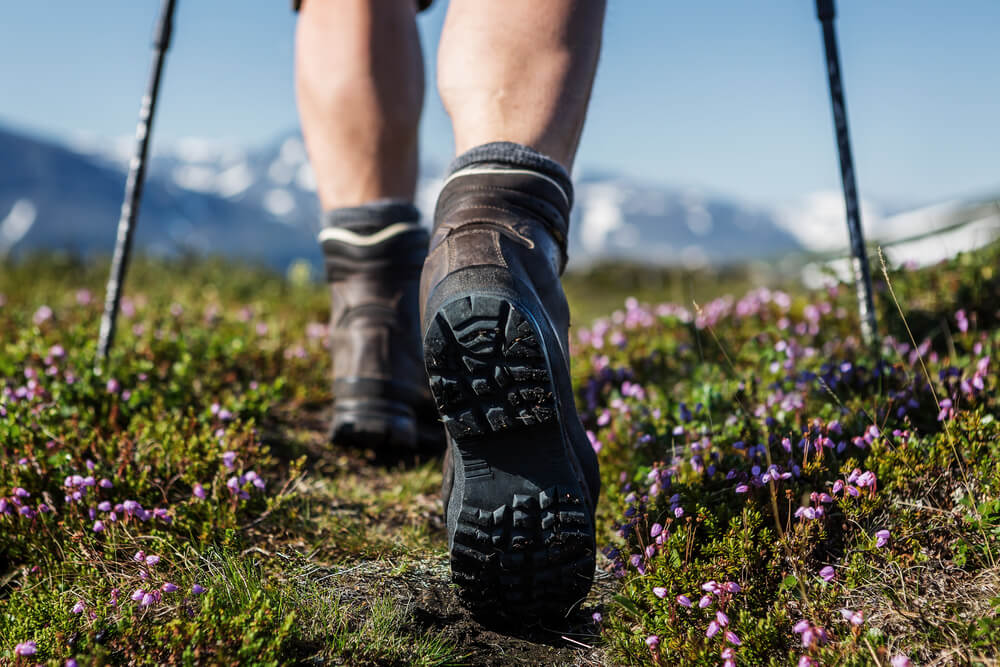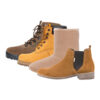Every hiker should have at least one pair of hiking boots in their pack, right? After all, they ensure you can enjoy your hiking experiences without worrying about any potential discomfort or risk of injury by providing support, stability, and protection on rough terrain.
However, hiking boots are not indestructible and will eventually wear out or become damaged if used frequently enough. In that regard, even the best hiking boots on the market will eventually show signs of wear and tear or become damaged. Using this product inevitably leads to this consequence, and there’s no way around it.

Photo by Clay Banks from Unsplash
Nevertheless, it can be challenging to determine whether your hiking boots need to be repaired or replaced. However, doing so is an important decision that can impact your safety and comfort while you are on the trail.
In this post, we’ll talk about the signs that indicate whether you need to repair or replace your hiking boots, some factors to consider, and the importance of investing in boots of high quality.
Signs That You Need To Repair Your Hiking Boots
Minor damages such as loose threads, worn-out laces, or a broken eyelet can be easily repaired and should not be a cause for concern. On the other hand, if your hiking boots have sustained more significant damage, such as a torn or punctured sole, a broken shank, or damage to the upper, you may want to consider having them repaired.
You should get your hiking boots repaired if a professional cobbler can fix the damage. Fixing a pair of hiking boots can often save money compared to buying new ones, in addition to extending the boots’ useful lifespan.
Signs That Your Hiking Boots Need To Be Replaced
If your hiking boots have been severely damaged to the point where they can no longer be repaired, it is time to replace them. Your hiking boots’ bottoms, specifically the soles, are an essential component that offers traction and support. If the sole of your boots has become excessively worn, cracked, or has holes in it, this is an indication that you should get a new pair.

Photo by Rostyslav Savchyn from Unsplash
A worn-out sole can reduce the amount of traction available, which increases the likelihood of slips and falls. If the upper leather or synthetic materials on your hiking boots are excessively worn, torn, or punctured, this is yet another indication that you need to get a new pair. An uncomfortable fit, blisters, or even injuries can result from uppers that have been damaged.
Factors To Consider When Replacing Your Hiking Boots
When it’s time to replace your hiking boots, several factors need to be considered. The first factor is fit. The right fit is crucial for comfort and preventing injuries. Ensure the boots fit snugly but not too tight, and there’s enough room for your toes to wiggle.
The second factor is comfort. Hiking boots should be comfortable right out of the box. Consider trying on several pairs before settling on the perfect pair. Lastly, consider your intended use. Different types of hiking boots are suitable for different types of terrain. Ensure that you select a pair that’s appropriate for the type of hiking you plan to do.
Importance Of Investing In High-Quality Hiking Boots
Investing in high-quality hiking boots is essential for longevity and performance. High-quality hiking boots are designed to withstand the rigors of the trail, providing support, stability, and protection for your feet.
They are made from durable materials that withstand harsh weather conditions, rough terrain, and constant use. Moreover, high-quality hiking boots often come with warranties that cover defects in materials and workmanship. While they may cost more upfront, investing in high-quality hiking boots can save you money in the long run by reducing the need for repairs or replacement boots.

Photo by Ali Kazal from Unsplash
Taking Care Of Your Hiking Boots
To prolong the lifespan of your hiking boots, it’s crucial to take care of them. Regular cleaning, conditioning, and waterproofing can help protect the leather or synthetic materials of your footwear from wear and tear. Ensure that you remove any dirt or debris from your boots after each hike and let them dry naturally. Conditioning your boots regularly helps keep the leather supple and prevents cracking or drying out. Waterproofing your boots helps keep your feet dry and prevents damage from moisture.
Final Thoughts
Deciding whether to repair or replace your hiking boots is a crucial decision that requires careful consideration of several factors. Knowing when to repair or replace your hiking boots can help you save money, ensure your safety on the trail, and prolong the lifespan of your boots.
When replacing your boots, ensure that you consider factors such as fit, comfort, and intended use. Investing in high-quality hiking boots is essential for longevity and performance, and taking care of your boots through regular cleaning, conditioning, and waterproofing can help prolong their lifespan. By making informed decisions, taking care of your boots, and investing in high-quality gear, you can ensure a comfortable and safe hiking experience for years to come.






